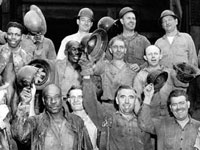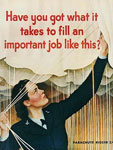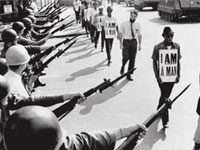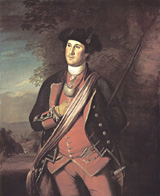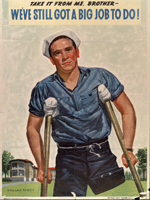Today, the 146th anniversary of President Abraham Lincoln’s death, a new historical feature film, The Conspirator, opens.
It is interesting timing for another reason as well. The Conspirator is the first major motion picture to open during the Civil War sesquicentennial and yet it begins with one of the war’s closing chapters: the assassination of President Lincoln. It quickly, however, takes you beyond the events of the assassination and into a less well-known aspect of post-Civil War history.
Directed by Robert Redford, the film focuses on the relationship between the only woman accused in the assassination conspiracy, Mary Surratt, (played by Robin Wright) and her defense attorney, Frederick Aiken (played by James McAvoy). Aiken, a Union war hero, at first does not want to have anything to do with the defense of Surratt. In turn, Surratt does not want to do anything to possibly implicate her son who flees the country after the assassination and is considered a suspect.
Aiken eventually decides that Surratt deserves a fair trial and it is through Aiken that we as an audience wrestle with the central question of the film: Was Mary Surratt complicit in the Lincoln assassination? Like a good teacher, the movie leaves you to decide this for yourself.
Teaching Resources
In conjunction with the film, the producers of The Conspirator developed an Educators’ Page with links to a downloadable Educational Resource Guide (41 pages) and movie poster. Free registration is required.
The guide offers three lessons: Women and the Civil War, Impact of Presidential Assassinations, and Right to a Fair Trial, all geared toward students ages 13 and older.
Classroom Connections
If you are looking for additional ways to use interest in The Conspirator in your classroom, Teachinghistory.org can point you in some good directions.
Let’s start with the big question: What do students learn when watching historical feature films? In this study from the University of British Columbia, researchers found that students often empathize more strongly with the past after seeing a historical film, but they also have difficulty analyzing the film’s historical accuracy. So it is important to provide students with the background knowledge they need in order to analyze a film’s historical accuracy.
Here are a few resources found on Teachinghistory.org related to the Lincoln assassination:
- For a gripping retelling of the Lincoln assassination, listen to this NPR podcast at Fords’ Theatre with James Swanson, NY Times best-selling author of Manhunt.
- Find answers to the question of why John Wilkes Booth wanted to assassinate the president in this Ask a Historian Q&A.
- In another Ask a Historian, explore the question of whether President Lincoln had premonitions of his own death.
- For information about Mary Surratt, visit the Surratt House Museum.
- For younger students, this review of the Gilder Lehrman Institute lesson, What Events Led to the Lincoln Assassination?, is suitable for grades 4 and 5.
- The Chicago Historical Society produced an interesting online exhibit, Wet with Blood, that invites you to join historians and scientists to look at the artifacts related to the Lincoln assassination.
- Looking for primary source materials related directly to the conspirators’ trial and execution? The Daniel Weinberg Collection at the Indiana Historical Society has over 90 items related to the assassination conspiracy, including the handwritten execution order.
For other resources beyond Teachinghistory.org, the University of Missouri-Kansas City School of Law offers the Trial of the Lincoln Assassination Conspirators that includes images, newspaper articles, and excerpts from the trial transcripts. Your students can compare the primary source material related to the trial to the movie’s version of events.
The Library of Congress’ Teaching with Lincoln has a section of materials related to the assassination, which includes resources for teachers, resources for students, and primary sources.
Films offer a great way to introduce young people to the stories of history and with the right teaching tools they can help engage students in historical inquiry. Try incorporating a few ideas in your next lesson and let us know what works!

